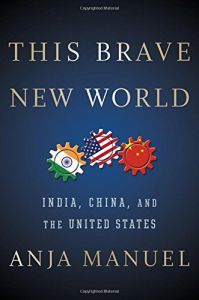Join getAbstract to access the summary!

Join getAbstract to access the summary!
Anja Manuel
This Brave New World
India, China, and the United States
Simon & Schuster, 2016
What's inside?
The world’s balance of power is shifting from the West to the East. It could get messy.
Recommendation
In this engaging and lively overview, professor Anja Manuel advises the US to cooperate with China where possible, while being clear about where it draws the line. A former US State Department official who now teaches at Stanford, Manuel cautions that while China draws international attention, Americans tend to overlook India, which is nearly as important. Manuel, who comprehensively updated the book in 2016 and added a preface that addresses Donald Trump’s administration, ultimately paints a hopeful picture. While always politically neutral, getAbstract recommends her elegantly written study to investors, policymakers and anyone who is involved in global commerce.
Summary
About the Author
Co-founder of RiceHadleyGates, a strategic consulting firm, Anja Manuel served in the US State Department from 2005 to 2007 and now lectures at Stanford University. She helps US companies expand into China and India.

















Comment on this summary